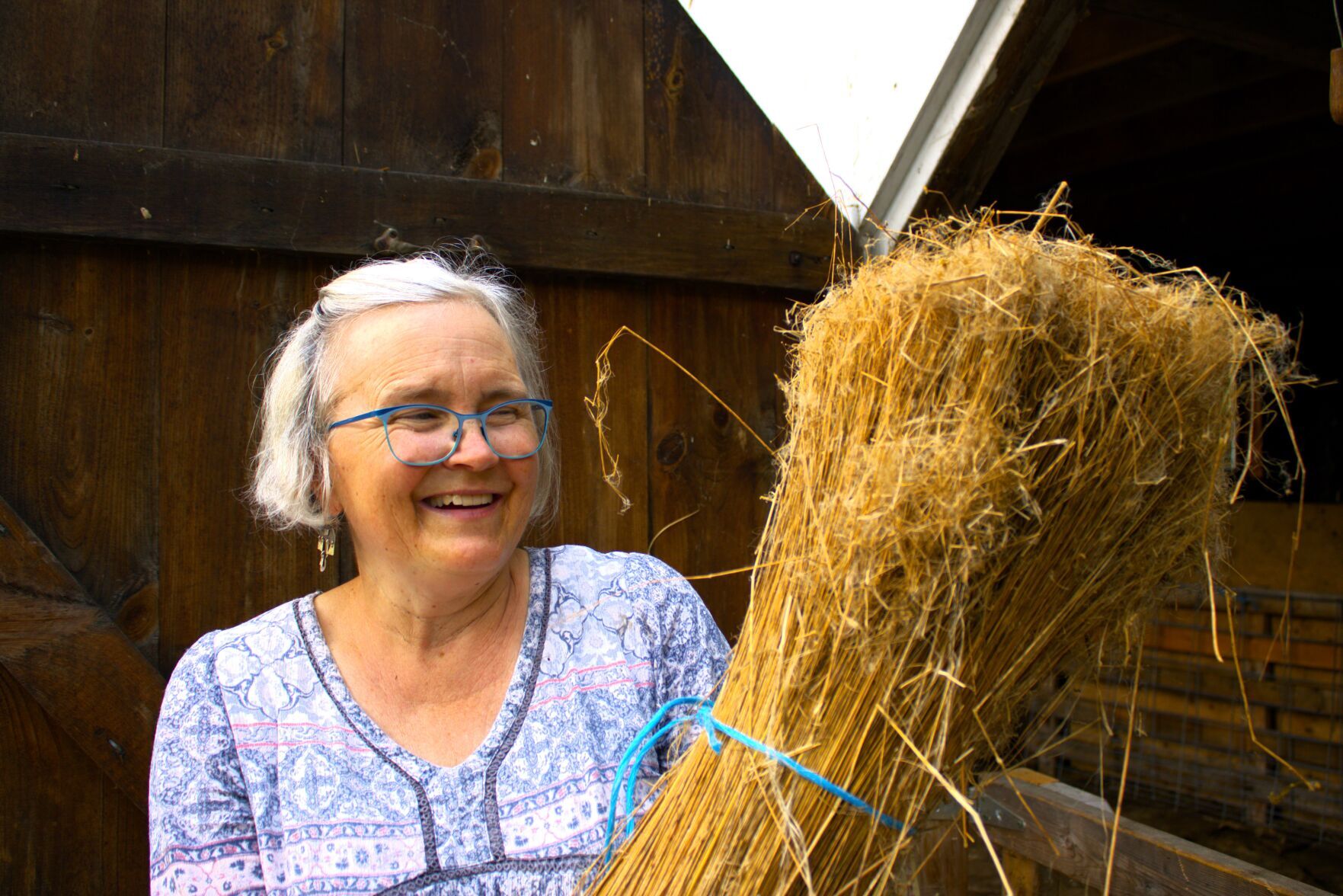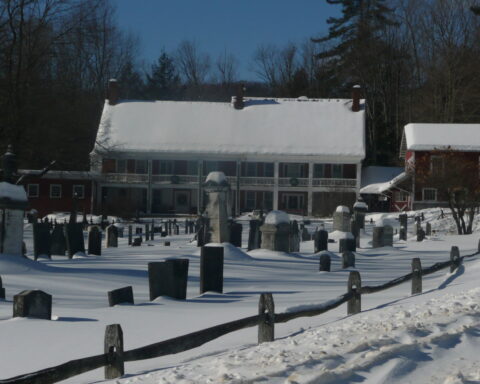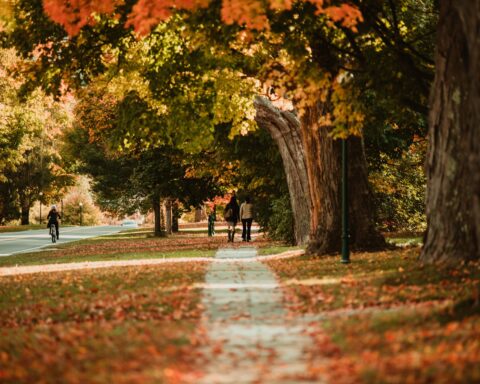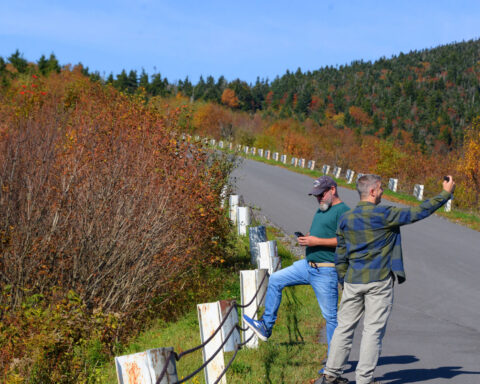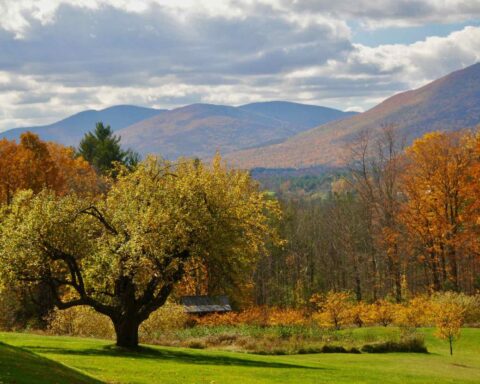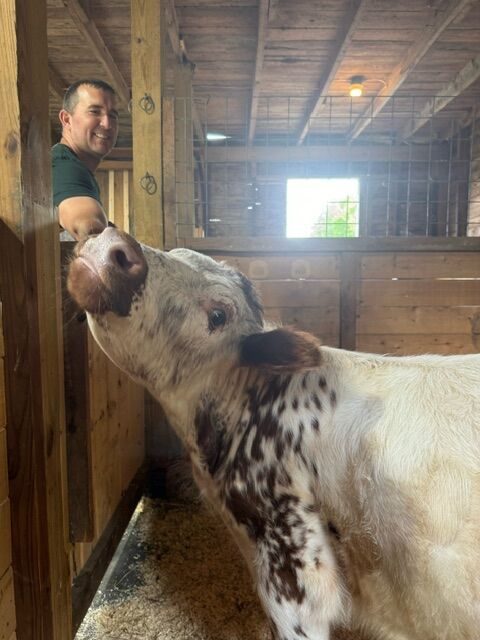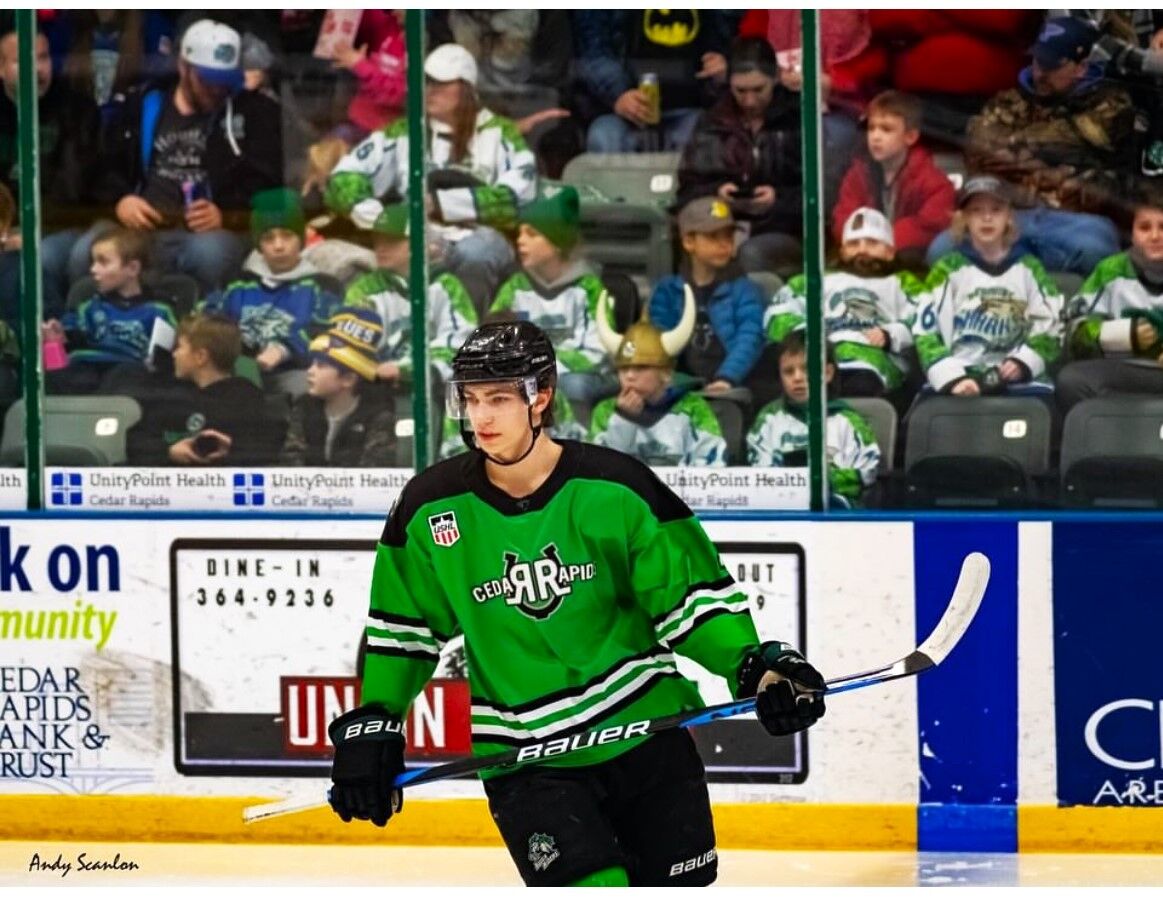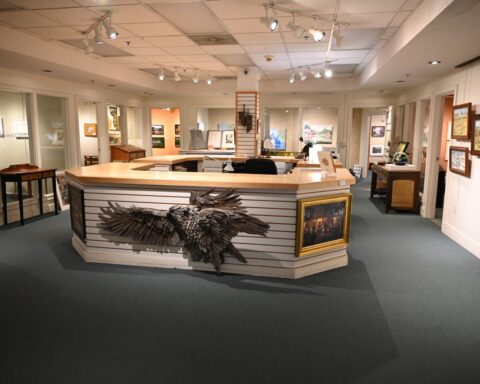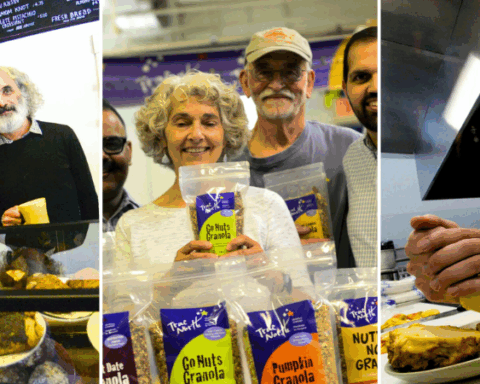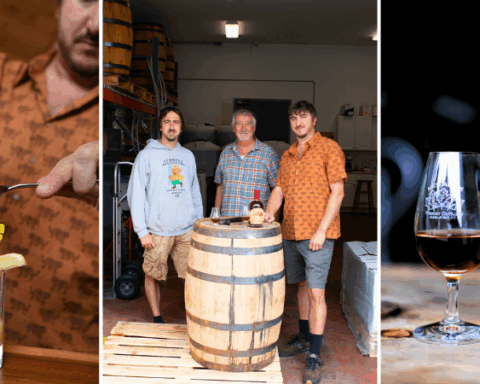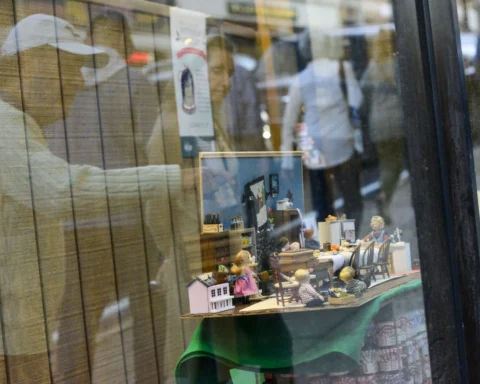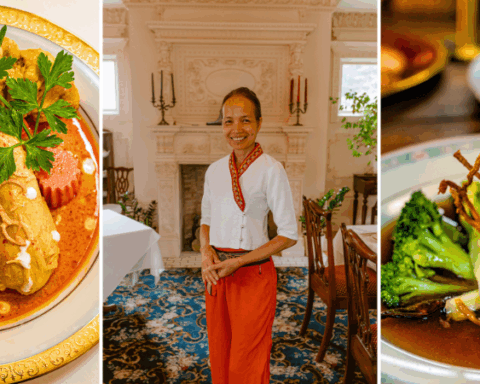By Danielle M. Crosier, Vermont Country Magazine.
DANBY — Andrea Myklebust was standing in the shade of the studio doorway of her farm in Danby on a steamy summer morning, brushing small pieces of plant material from her clothing and fingering a loose thread at the hem of her tunic.
Myklebust’s tunic — more of a cotton peasant dress — was patterned in a white and blue French provincial print. It had just a touch of bohemian flair, and was worn lovingly thin and gauzy.
Her woven straw hat with its wide brim was adorned with naturally dyed and hand-braided cotton cords, dangling to the sides.
Together with the wide-leg linen trousers, there emerged a portrait of a woman who truly appreciated the fine nature and comfort of natural and organic fibers.
“I’m glowing,” Myklebust laughed, her eyes twinkling as she dabbed moisture from her brow.
It was one of those hazy, hot and humid mornings in Vermont where the weather only promises to become more volatile and oppressive as the day wears on.
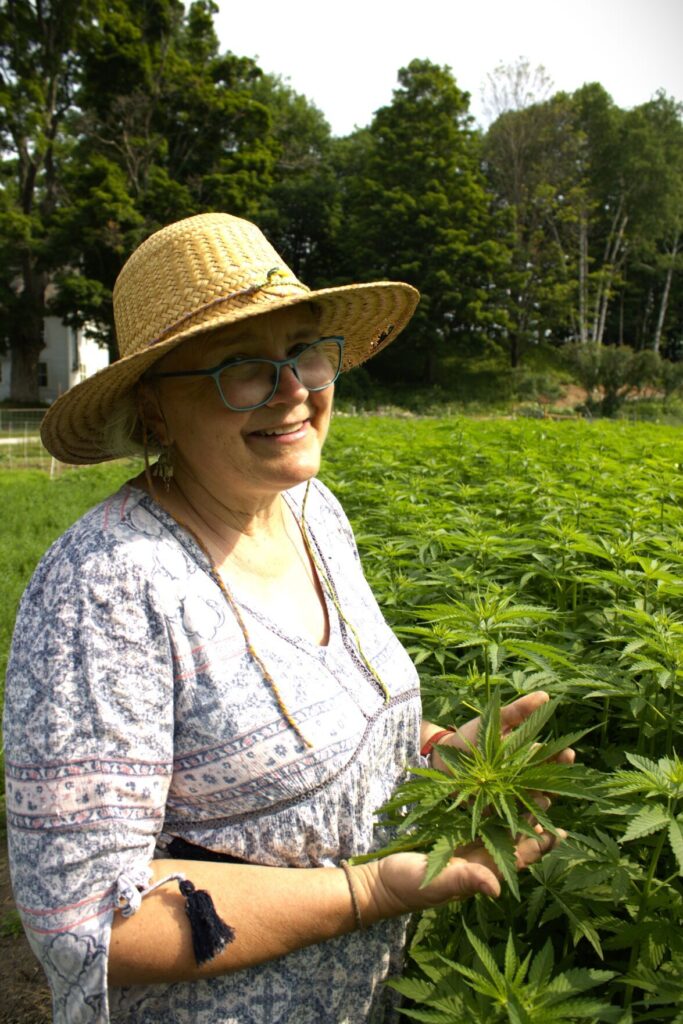
Myklebust’s son, Grayson Sears, was working on the addition to the existing studio and her husband, Stanton Sears, was teaching a workshop.
The studio space — originally repurposed from an existing structure to house Stanton Sears’ woodworking, sculpting, welding and stone carving business — had more recently become of use to the whole family, Mykelbust said.
It now housed Stanton Sears’ new topographical map stained glass projects, as well as Grayson Sears’ Tactual Goods projects — hence the growing need for expansion.
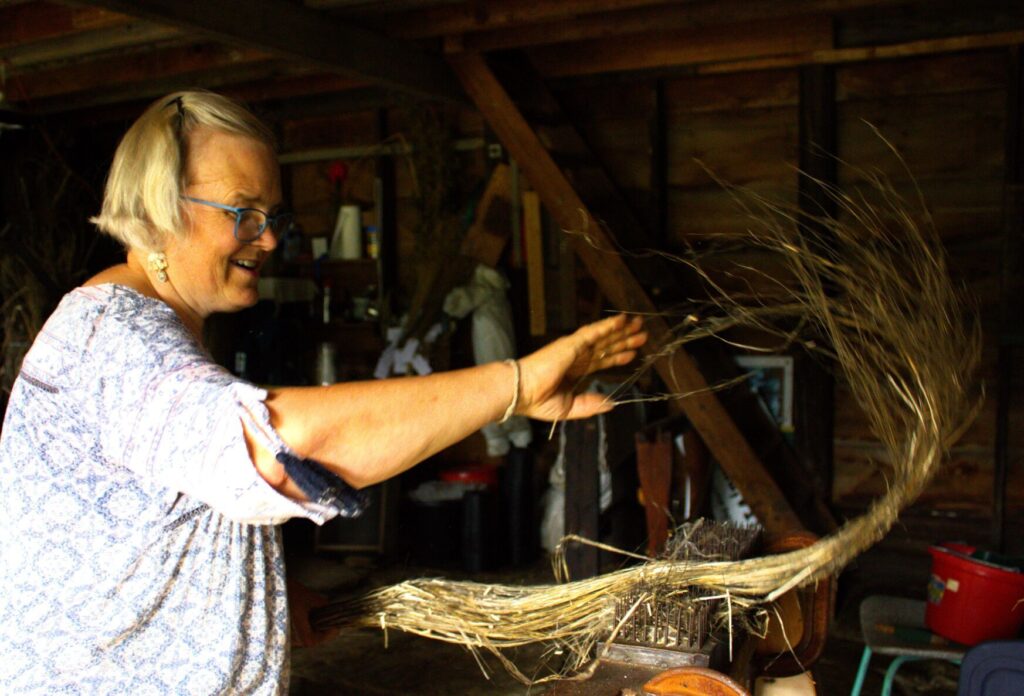
Additionally, since moving to Vermont from Wisconsin five years ago, Myklebust has also used the studio space to create the wooden tools needed for her new passion — exploring the world of natural fibers and finding ways to relocalize textile production in Vermont.
It all emerged from a change-of-life moment. Stanton Sears was getting ready to retire from college teaching, and the pair just decided, “Let’s go.” Myklebust and Sears knew they wanted to be in New England, and found the little farm in Danby just to their liking.
“Over the years, he and I have done a lot of work that was map-related, but these days I’m doing more of my traditional textile, natural fiber textile stuff,” said Myklebust, reminiscing of the days when she and her husband Stan had produced more than 70 collaborative public art pieces that frequently referenced geographical aspects of an area — a Bundt cake pattern along a bridge in Minnesota, a landmark barn in New Hampshire, a bell tower sculpture for a midwestern community college.
Myklebust pointed to the model of the welded bell tower. A flower and other plants adorned the base, and a metal chicken and sheep stood peeking out of an opening in the tower, which unsurprisingly was topped with bells.
“There’s some potato-related imagery somewhere in there,” said Myklebust, throwing her head back as she laughed at the statement before explaining. “It was for an area that had historically been potato fields. But, that was 30 years ago — and, well — the chicken, the sheep, the farming — it was like a foreshadowing of our future.”
The Danby farm that the family now inhabits includes 12 acres of rolling pastures and fields, the original farmhouse inhabited by Myklebust and Sears and their grown children, a newer house inhabited by Myklebust’s parents who followed the family to Vermont, the sheep barn, a converted studio/barn and the original old barn with stone flooring.
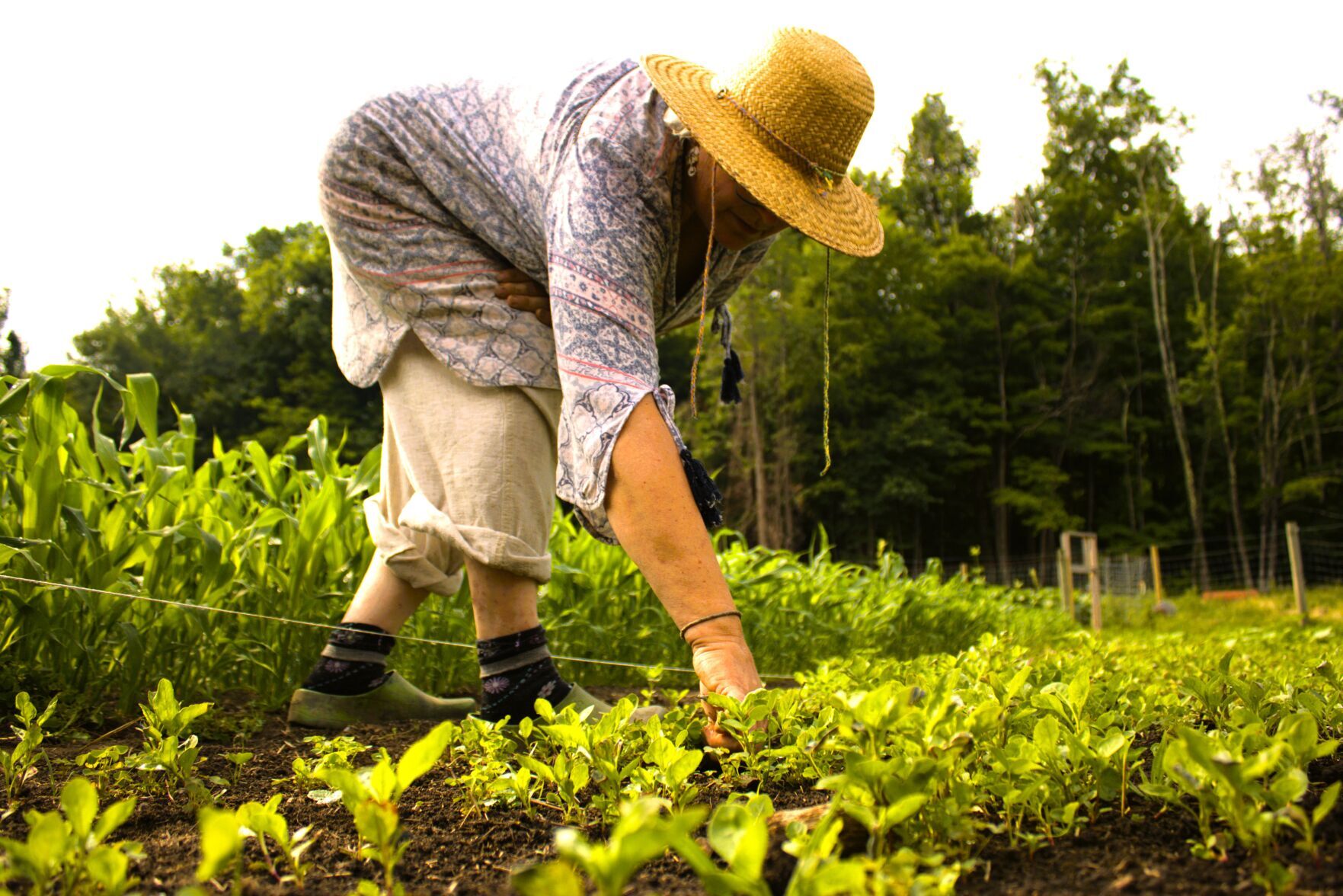
Dense woodlands mark the borders of the property. Crops were sown in delineated plots, and Myklebust’s “motley crew” of 39 sheep were grazing under overarching bows of maple and pine on the edge of the far fields. The chickens were also “taking shade” from the heat.
In the plots closest to the drive grew the plantings for Myklebust’s natural dye garden, the hemp and flax varieties, an assortment of vegetables, luffa and a whole lot of rhubarb.
The rhubarb, Myklebust and her husband joke, is so large that, “It can be seen from near Earth orbit on satellite imagery.”
Along the rear of the property, Myklebust points out an area where a small ephemeral stream graces the property, at will.
The sheep, though, were the catalysts for everything, Myklebust said, turning to walk toward the gardens and entering through a wooden gate. As she walked along the rows, periodically bending over to pluck a weed and cast it aside, her hands draped gently along the stalks of the hemp and cupped the upper growth of the flax.
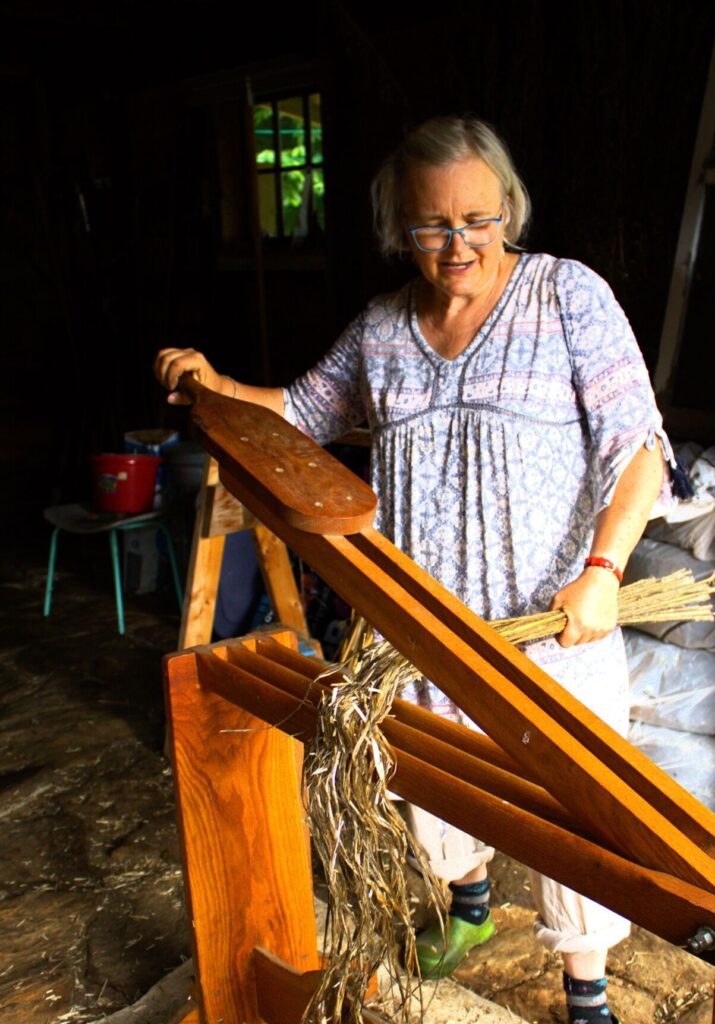
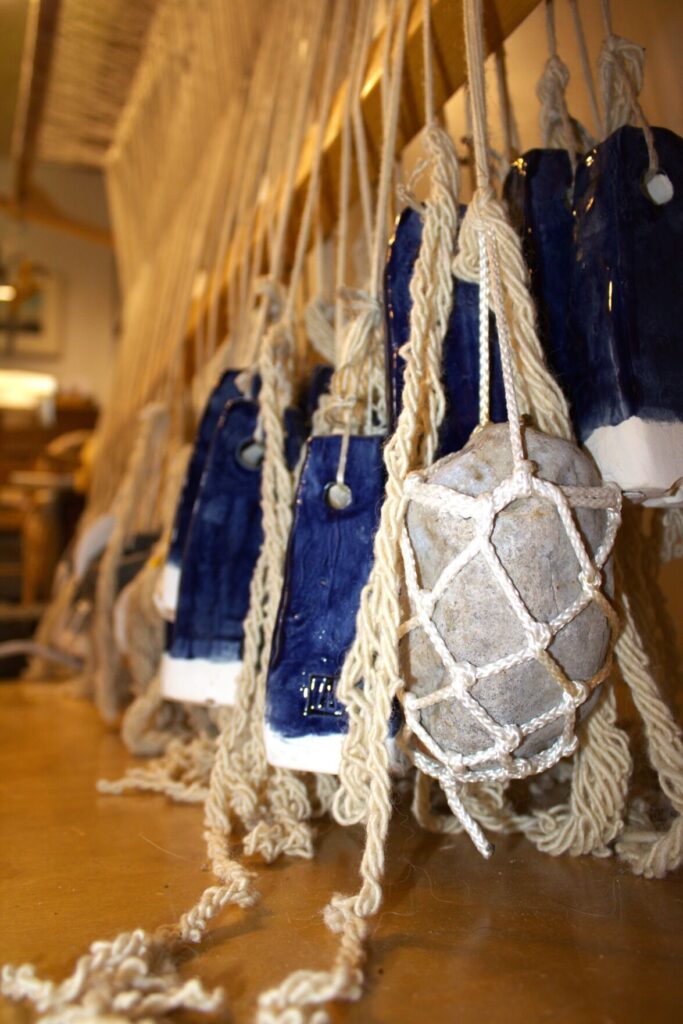
“My background is in the arts, and Stan and I were making public arts projects for a very long time, but, starting in 2011, 2012, I took a turn,” revealed Myklebust, almost wonderingly. “We were living in a place where I could finally start to have some sheep. I got really interested in working with natural fiber, and that’s really understating it. My entire life just veered off into this other direction.”
It began with learning to care for the sheep and progressed to learning how to spin, a task in which Myklebust often still finds a meditative sense of peace and well-being, especially in the fall and winter months. The new passions progressed to weaving, which Myklebust had learned just a bit of in undergraduate school, and then into learning about the antique tools she was finding in the Midwest.
“All of these were from the Scandinavian and German immigrants who came in the 19th century and brought the tools with them — to work with wool and to work with flax,” said Myklebust, dabbing once again at her face with a sleeve. “And, just learning about it made me more curious about it — like, reading about all the steps that are involved in going from the raw material of a plant growing in the field all the way through to a piece of linen cloth — and I grew my first flax crop.”
According to Myklebust, natural fiber farming is a lost way of life — a lost art — and one that she sees in need of revival. “Less than 1% of the annual global textile production today tends to be natural Bast fibers like hemp and flax.”
“Most textiles today are made from fossil fuels — so, it’s plastic,” she added. “And, you don’t have to look far in any sort of textile production over the centuries to find a lot of environmental degradation and human exploitation. My interest is coming out of history and looking ahead — ahead, toward a future where we have to be thinking very differently about cloth.”
Today, on her Danby farm, Myklebust is growing multiple varieties of hemp — for a research grant for the University of Vermont, and for herself. For herself, she is also growing flax.
Both hemp and flax are raised from seed and used to be locally worked from farm to tablecloth. It was a year-long process.
In the spring, the seed would be started and growth would continue through the summer — during which time, crops would be tended with care to ensure the plants remained upright and undamaged. Harvesting would take place at different levels of maturity, depending upon how the fibers were to be used — and, sometimes, male plants of certain cultivars might be harvested earlier than their female counterparts in order to produce a fiber of superior quality for linen.
During the late summer and early fall, harvesting would shift to retting — a process of using water moisture and microorganisms to naturally break down the exterior stem fibers and the inner core of the plants, releasing the soft and flexible fibers within.
Once retting was complete, the braking, skutching, hackling and skeining would take place — and the winter months would be used for spinning and weaving. In the early spring, dyeing might take place with flowers, herbs and tinctures prepared from last summer’s or last fall’s harvest
“Vermont, like the rest of the northeastern United States, is a good climate for this,” said Myklebust. “You’re harvesting it at the beginning of August. And, with the traditional process of retting — breaking down the stems so that they can be processed — this is great. The weather that we have where we get this heavy dew in the morning — it’s perfect.”
The soft and flexible fibers produced after the retting and processing come from the phloem, the inner bark of the plants. They are revealed slowly, as a variety of methods are employed to break away all of the other plant material (known as the boon) — a process that Myklebust pointed out used to be passed from one generation to another.
“It’s a lost art, a lost industry,” she said, shrugging and acknowledging that it has been a struggle to try to piece that ancient knowledge base back together for a future generation.
“Hemp is interesting. It’s known for its resistance to rotting and that is why it was traditionally used in rope and in sailcloth and canvas. The word canvas comes from cannabis — literally, the plant named the cloth,” said Myklebust, adding that centuries ago, hemp was used for a myriad of other textiles, such as a really fine linen thread.
In the steamy heat, moisture had already dampened her upper lip and the rim of her brow. Removing her woven straw sun hat, she smiled and blotted her brow again with a forearm as she walked and talked. And there really was a radiance about her — she was glowing.
“It’s beautiful material. It’s fun to work with at all stages of development,” said Myklebust, cleaning the boon from the plant fiber and demonstrating the ancient practices as she spoke — and explaining that while her favorite place to be in the summer is in her garden with her plants, it can vary seasonally.
“Traditional textile practices are grounding. For me, there is a common thread — there’s the symbiotic relationship of keeping animals that nurture the soil, growing and harvesting and creating from the ground you are on, reclaiming these lost arts.”
To those who see this as an “unsophisticated way of living, a step back from civilized life,” Myklebust would counter that this, and the collaborative cooperatives that she envisions will emerge from this, are the future.
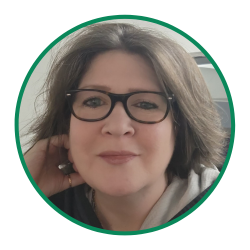
Danielle Crosier is a landlocked mermaid who found her way to Vermont by accident. She is a wife and mother, a former technical writer (10 years), former educator (19 years), and glass artisan with a background in marketing and strategic management. Her interests, though, lie mainly in studying and understanding systems and improving the lives of those around her. She also loves spending time with her precious children and their significant others, organizing, learning about social geography, creative endeavors, experimenting with various cuisines, and exploring the world around her.
